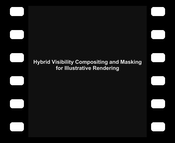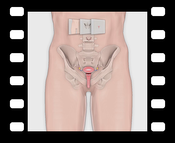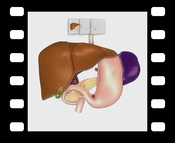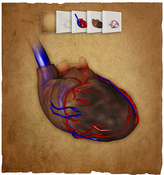Information
- Publication Type: Journal Paper (without talk)
- Workgroup(s)/Project(s):
- Date: 2010
- Journal: Computers & Graphics
- Number: 34
- Pages: 361 – 369
- Keywords: compositing, masking, illustration
Abstract
In this paper, we introduce a novel framework for the compositing of interactively rendered 3D layers tailored to the needs of scientific illustration. Currently, traditional scientific illustrations are produced in a series of composition stages, combining different pictorial elements using 2D digital layering. Our approach extends the layer metaphor into 3D without giving up the advantages of 2D methods. The new compositing approach allows for effects such as selective transparency, occlusion overrides, and soft depth buffering. Furthermore, we show how common manipulation techniques such as masking can be integrated into this concept. These tools behave just like in 2D, but their influence extends beyond a single viewpoint. Since the presented approach makes no assumptions about the underlying rendering algorithms, layers can be generated based on polygonal geometry, volumetric data, pointbased representations, or others. Our implementation exploits current graphics hardware and permits real-time interaction and rendering.Additional Files and Images
Additional images and videos
Additional files
Weblinks
No further information available.BibTeX
@article{bruckner-2010-HVC,
title = "Hybrid Visibility Compositing and Masking for Illustrative
Rendering",
author = "Stefan Bruckner and Peter Rautek and Ivan Viola and Mike
Roberts and Mario Costa Sousa and Eduard Gr\"{o}ller",
year = "2010",
abstract = "In this paper, we introduce a novel framework for the
compositing of interactively rendered 3D layers tailored to
the needs of scientific illustration. Currently, traditional
scientific illustrations are produced in a series of
composition stages, combining different pictorial elements
using 2D digital layering. Our approach extends the layer
metaphor into 3D without giving up the advantages of 2D
methods. The new compositing approach allows for effects
such as selective transparency, occlusion overrides, and
soft depth buffering. Furthermore, we show how common
manipulation techniques such as masking can be integrated
into this concept. These tools behave just like in 2D, but
their influence extends beyond a single viewpoint. Since the
presented approach makes no assumptions about the underlying
rendering algorithms, layers can be generated based on
polygonal geometry, volumetric data, pointbased
representations, or others. Our implementation exploits
current graphics hardware and permits real-time interaction
and rendering.",
journal = "Computers & Graphics",
number = "34",
pages = "361--369",
keywords = "compositing, masking, illustration",
URL = "https://www.cg.tuwien.ac.at/research/publications/2010/bruckner-2010-HVC/",
}
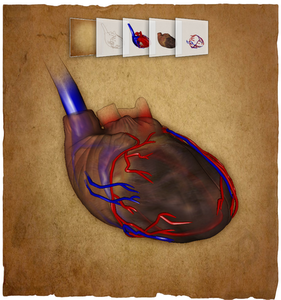

 Preprint
Preprint